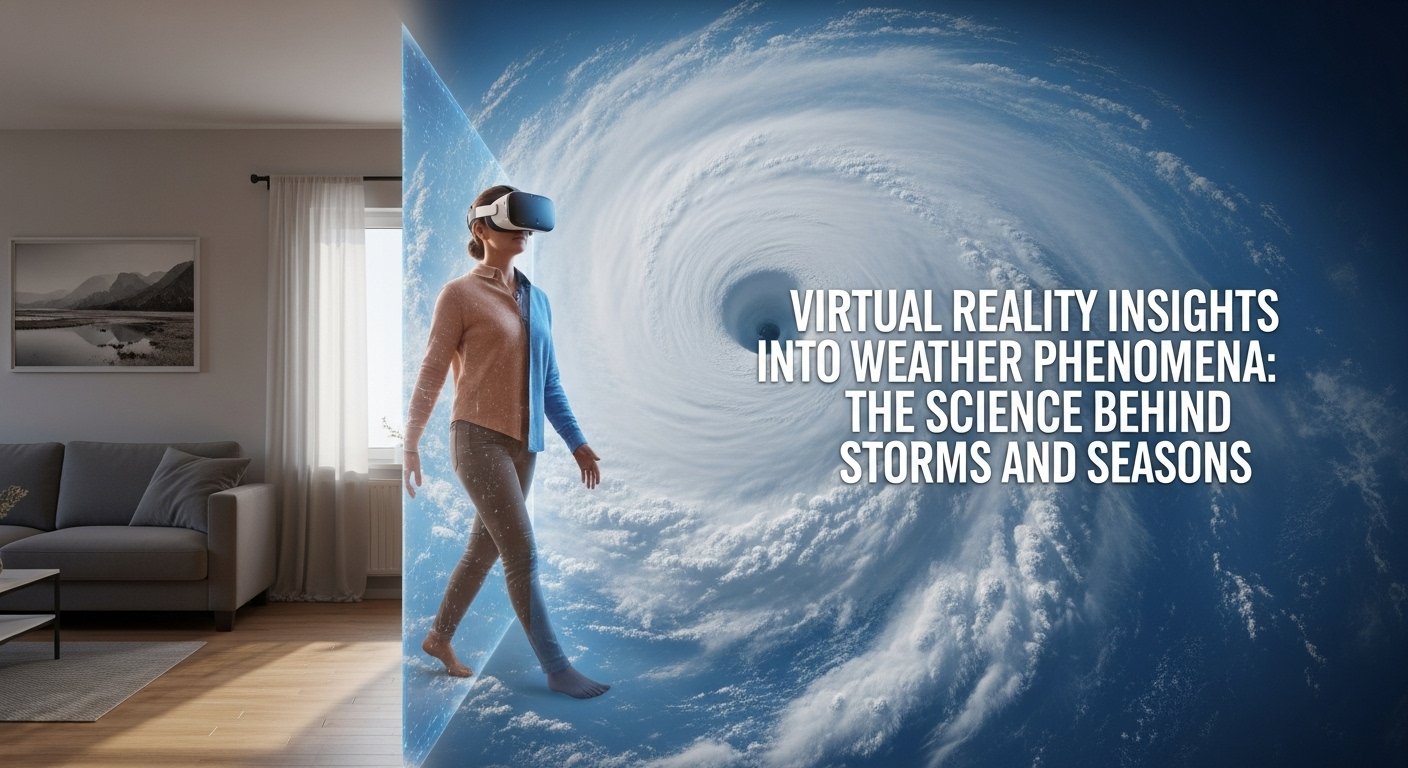Stepping Inside the Storm: How Virtual Reality is Revolutionizing Weather Science
I still remember the feeling of the air just before a big summer thunderstorm. The sky would turn a strange, bruised purple. The wind would suddenly stop, creating an eerie silence, and you could feel a static charge in the atmosphere, a sense of immense power waiting to be unleashed. As a kid, I would sit by the window, mesmerized and a little terrified by the raw energy of nature. I always wondered: what does it actually look like inside that towering, angry cloud? For generations, that question was purely hypothetical. But today, thanks to the immersive power of Virtual Reality, we can finally find out.
We are entering a new era of scientific discovery where we no longer have to be passive observers of the world’s most complex phenomena. Virtual Reality is a technological marvel that does more than just show us a picture; it transports us. For young learners, educators, and the incurably curious, it’s a game-changer, especially in the field of meteorology. Forget flat, 2D weather maps and confusing diagrams in textbooks. Imagine being able to fly into the heart of a hurricane, manipulate the variables that form a tornado, or stand in space and tilt the Earth on its axis to truly understand the seasons. This is the promise of Virtual Reality in weather education: transforming abstract data into unforgettable, intuitive experiences.
Beyond the Weather App: Why We Need a New Way to See the Weather
For decades, weather education has relied on abstraction. We’ve used arrows on a map to represent wind, static diagrams to explain cloud formation, and simplified globes to demonstrate the seasons. While these tools are useful, they often fail to capture the three-dimensional, dynamic, and interconnected nature of our planet’s atmosphere. A 2D drawing of a cold front can’t adequately convey the immense scale and power of colliding air masses.
This is the problem Virtual Reality was born to solve. By creating a fully immersive, 3D environment, it bridges the gap between abstract knowledge and intuitive understanding.
- Immersion: VR tricks your brain into believing you are actually there, creating a powerful sense of presence that enhances focus and memory retention.
- Scale: It allows you to appreciate the colossal size of a hurricane or the intricate, delicate structure of a single snowflake, shifting between macro and micro perspectives in an instant.
- Interaction: The most powerful element. In Virtual Reality, you are not just a spectator; you are an active participant. You can change variables, rewind time, and explore complex systems from any angle.
This is the fundamental shift: from learning about the weather to learning within the weather.
The Best Free Online Data Science Courses IN 2025
Stepping Inside the Storm: How Virtual Reality Demystifies Weather Phenomena
Let’s move from the theoretical to the truly awe-inspiring. How exactly can Virtual Reality take us inside the most powerful weather events on Earth?
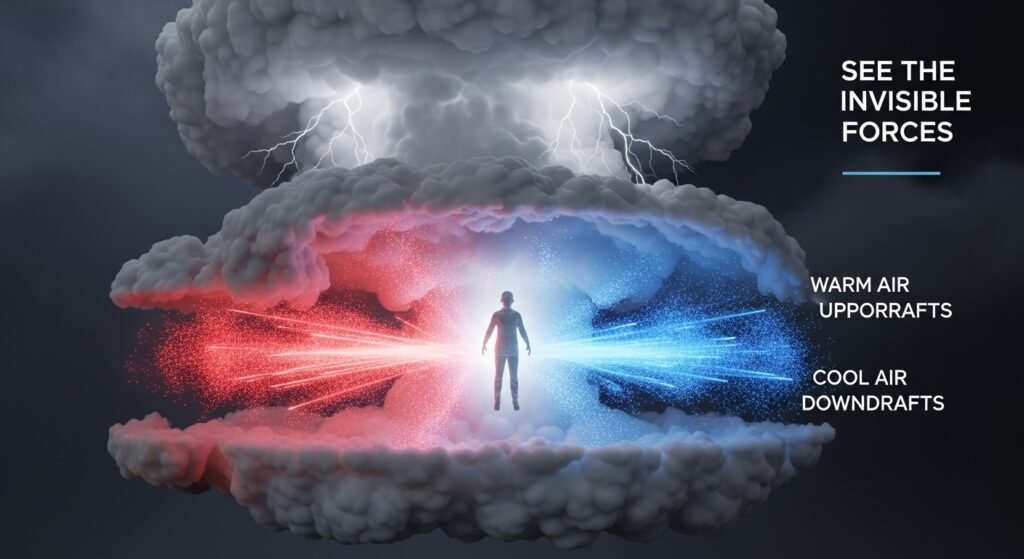
The Anatomy of a Thunderstorm
A textbook will tell you that a thunderstorm is formed by a process of convection—warm, moist air rising and cool, dense air sinking. It’s a simple definition for an incredibly complex process.
Now, imagine this in Virtual Reality: You start on the ground on a hot, humid day. You can see the heat shimmering off the ground. As you begin to ascend, you can visualize the warm air as a stream of red particles, rising rapidly into the atmosphere. As you enter the forming cumulonimbus cloud, you see the cool air, represented by blue particles, sinking around you. You are literally flying through the updrafts and downdrafts. You can reach out and see how water vapor condenses as it rises and cools, and at higher altitudes, you can witness the collision of ice crystals and water droplets that generates the electrical charge for lightning. Suddenly, “convection” isn’t a vocabulary word; it’s a powerful, observable engine that you are inside.
The Calm in the Eye of a Hurricane
We’ve all seen the satellite images of hurricanes—majestic, swirling spirals of cloud. But their structure is hard to grasp from above.
A Virtual Reality experience could place you directly in the calm, clear eye of a Category 5 hurricane. You could look up and see the towering, circular “stadium effect” of the eyewall, a colossal wall of cloud stretching miles into the sky. The simulation could then pull you out, showing the entire system rotating (due to the Coriolis effect) and its immense scale compared to the landscape below. You could even interact with the data, changing the sea surface temperature to see how it strengthens or weakens the storm. This provides a level of insight that no 2D diagram can match, and you can learn more from the National Hurricane Center about the science behind these storms.
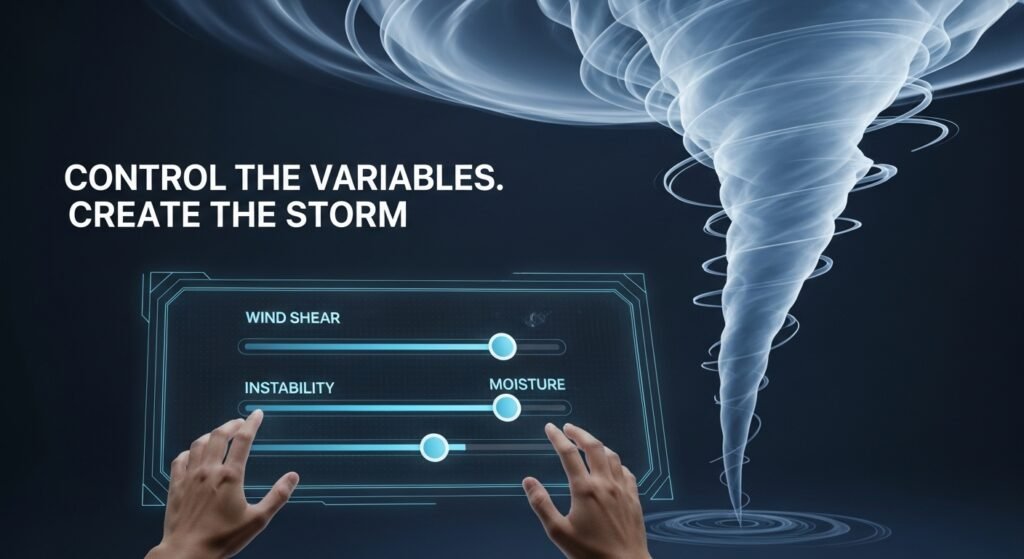
Tornado Alley in Your Headset
Tornadoes are one of nature’s most violent and localized phenomena. Their formation depends on a very specific set of atmospheric ingredients.
With Virtual Reality, a student could become a true storm chaser in a safe, controlled environment. The simulation would start by showing a large supercell thunderstorm. The user could then toggle different data overlays to see the invisible forces at play: layers of wind at different speeds and directions (“wind shear”), rotating updrafts (mesocyclones), and pockets of warm and cool air. By manipulating these variables, the student could discover the precise “recipe” needed for a tornado to form, watching as the funnel cloud descends from the base of the supercell. This interactive experimentation is the pinnacle of hands-on learning.
Traditional Learning vs. Virtual Reality Exploration: A New Forecast
The difference in educational approach is not just incremental; it’s a complete paradigm shift.
| Feature | Traditional Weather Education | Virtual Reality Weather Education |
| Dimensionality | 2D (diagrams, maps, videos). | 3D and 4D (three spatial dimensions plus time). |
| Student Role | Passive observer; memorizes facts. | Active participant; interacts with and manipulates systems. |
| Understanding | Abstract and conceptual. | Intuitive, experiential, and visceral. |
| Scale | Difficult to convey true scale. | Can instantly shift from micro (snowflake) to macro (hurricane). |
| Complexity | Often uses simplified, static models. | Can handle complex, dynamic, and interconnected systems. |
Export to Sheets
This table shows why Virtual Reality isn’t just a gimmick; it’s a fundamentally more effective way to teach complex, spatial sciences.
The Best Free Online Data Science Courses IN 2025
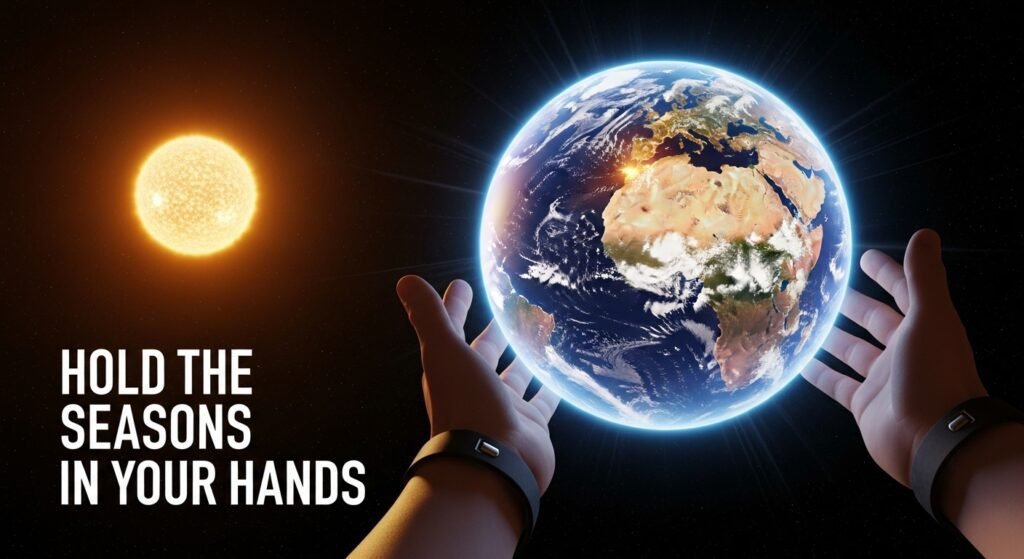
The Dance of the Earth: Finally Understanding the Seasons
Ask any adult why we have seasons, and many will incorrectly say it’s because the Earth gets closer to or farther from the Sun. The real reason—the 23.5-degree tilt of the Earth’s axis—is famously difficult to visualize.
This is where Virtual Reality has its ultimate “aha!” moment. Imagine a simulation where you are standing in space. In front of you is our solar system. You can see the Earth orbiting the Sun. With your virtual hands, you can reach out, grab the Earth, and see its axial tilt. As you manually move the Earth along its orbit, you can see with your own eyes how the Northern Hemisphere is tilted towards the Sun during its summer (receiving direct, concentrated sunlight) and away from the Sun during its winter (receiving indirect, spread-out sunlight).
You could even “stand” on your hometown and see the angle of the Sun in the sky change throughout the year. In five minutes, this experience provides a deep, intuitive understanding of a concept that has confused people for centuries. It’s a perfect example of how an immersive Virtual Reality experience can be more effective than hours of textbook reading.
How to Apply for Study Abroad Programs in the USA 2025 Guide
My First Virtual Storm: A Personal Journey
I’ve always been a science enthusiast, but I have to admit, I never truly felt the concept of wind shear. I understood the definition—wind changing speed or direction with height. But it was just an abstract fact.
That changed the first time I tried a sophisticated weather simulation in Virtual Reality. I was placed inside a developing supercell. The program allowed me to visualize the wind as millions of flowing particles. At ground level, they were moving slowly from the east. But as I ascended, I saw the particles speed up and start coming from the southwest, then even faster from the west at high altitudes. I was literally watching the different layers of the atmosphere slide past each other like cards in a deck, creating a powerful, invisible rotation. In that moment, the formation of a tornado was no longer a mystery; it was an observable, intuitive consequence. It was a learning experience I will never forget.
The Future is Here: Careers in Virtual Meteorology
This technology is no longer confined to the realm of science fiction or gaming. Meteorologists, climate scientists, and educators are already using Virtual Reality to do incredible work.
- Climate Data Visualization: Scientists at institutions like NASA are using VR to walk through and analyze incredibly complex climate models, allowing them to spot patterns and trends in global temperature and sea-level data that would be invisible in 2D.
- Emergency Response Training: First responders are using VR simulations of hurricanes and floods to train for real-world disaster scenarios in a safe but realistic environment.
- The New Wave of Careers: This technology is creating new career paths. Imagine being a VR Weather Simulation Designer, an Immersive Science Communicator, or a Climate Data Visualization Specialist. These are the jobs that will bridge the gap between hard science and public understanding, and they all have Virtual Reality at their core.
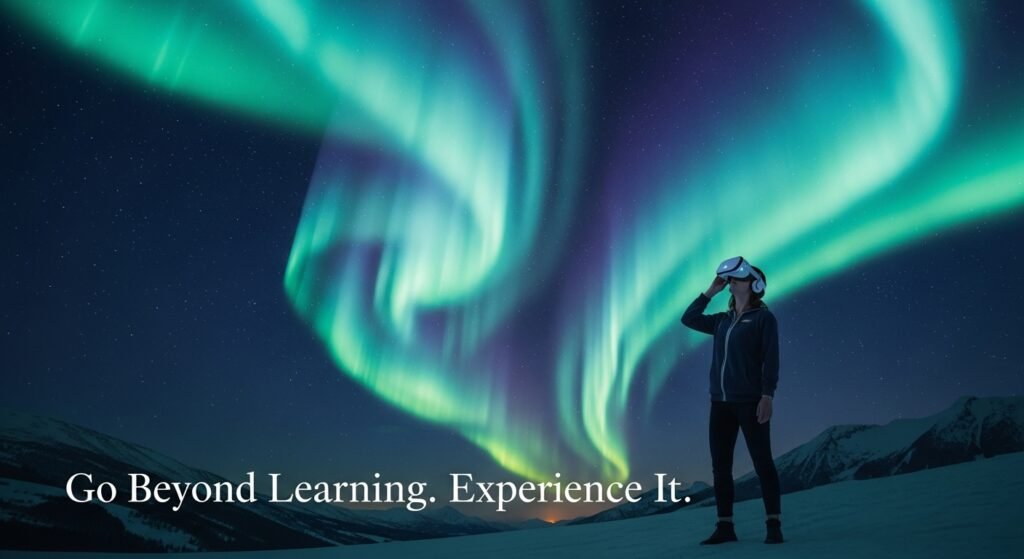
Conclusion: The Ultimate Field Trip
Virtual Reality is revolutionizing science education by appealing to our most fundamental human trait: our curiosity. It gives us a ticket to the ultimate field trip, allowing us to go to places we could never physically go—the inside of a cloud, the eye of a hurricane, or a vantage point in orbit around the Earth.
It transforms learning from a passive act of memorization into an active process of exploration and discovery. By allowing us to experience the awesome power and intricate beauty of our planet’s weather systems, Virtual Reality doesn’t just teach us about the world; it deepens our appreciation for it and inspires us to protect it.
If you could use Virtual Reality to experience any natural phenomenon, what would it be and why? Share your dream destination in the comments below!
How to Apply for Study Abroad Programs in the USA 2025 Guide

